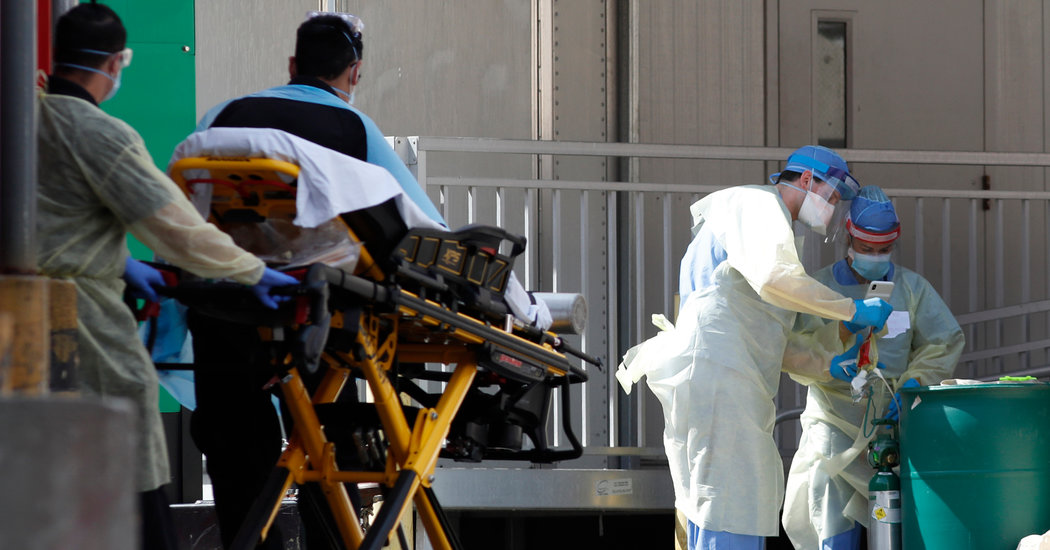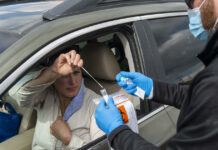
Obesity may be one of the most important predictors of severe coronavirus illness, new studies say. It’s an alarming finding for the United States, which has one of the highest obesity rates in the world.
Though people with obesity frequently have other medical problems, the new studies point to the condition in and of itself as the most significant risk factor, after only older age, for being hospitalized with Covid-19, the illness caused by the coronavirus. Young adults with obesity appear to be at particular risk, studies show.
The research is preliminary, and not peer reviewed, but it buttresses anecdotal reports from doctors who say they have been struck by how many seriously ill younger patients of theirs with obesity are otherwise healthy.
No one knows why obesity makes Covid-19 worse, but hypotheses abound.
Some coronavirus patients with obesity may already have compromised respiratory function that preceded the infection. Abdominal obesity, more prominent in men, can cause compression of the diaphragm, lungs and chest capacity. Obesity is known to cause chronic, low-grade inflammation and an increase in circulating, pro-inflammatory cytokines, which may play a role in the worst Covid-19 outcomes.
Some 42 percent of American adults — nearly 80 million people — live with obesity. That is a prevalence rate far exceeding those of other countries hit hard by the coronavirus, like China and Italy.
Obesity is defined by a measure called body mass index, which is based on a formula that divides one’s weight in kilograms by the square of one’s height in meters. Someone who is 5 feet 9 inches tall and weighs 203 pounds would have a B.M.I. of 30, which is considered obese.
The new findings about obesity risks are bad news for all Americans, but particularly for African-Americans and other people of color, who have higher rates of obesity and are already bearing a disproportionate burden of Covid-19 deaths. High rates of obesity are also prevalent among low-income white Americans, who may also be adversely affected, experts say.
More than half of Covid-19 deaths in the United States so far have been in New York and New Jersey, but the new findings mean the coronavirus could exact a steep toll in regions like the South and the Midwest, where obesity is more prevalent than in the Northeast.
“If obesity does turn out to be an important risk factor for younger people, and we look at the rest of the United States — where obesity rates are higher than in New York — that will be of great concern,” said Dr. Roy Gulick, chief of infectious diseases at Weill Cornell Medicine. “We may see a lot more younger people being hospitalized.”
Dr. Gulick’s review of data from the first 393 Covid-19 patients admitted to NewYork-Presbyterian/Weill Cornell Medical Center and NewYork-Presbyterian Lower Manhattan Hospital identified obesity as a risk factor for admission. He also found that among adults under the age of 54, half live with obesity, though the New York City obesity rate is only 22 percent.
One of the largest U.S. studies to identify obesity as a prominent risk factor analyzed data from more than 4,000 Covid-19 patients who sought care at NYU Langone Health between March 1 and April 2.
“Obesity is more important for hospitalization than whether you have high blood pressure or diabetes, though these often go together, and it’s more important than coronary disease or cancer or kidney disease, or even pulmonary disease,” said Dr. Leora Horwitz, the paper’s senior author and director of the Center for Healthcare Innovation and Delivery Science at NYU Langone.
Obesity also appears to be a factor for higher risk of death from Covid-19, though to a lesser degree, Dr. Horwitz said
She cautioned that the findings were preliminary, noted that some of the data was still incomplete and emphasized that the paper had not been peer reviewed.
Scientists are still somewhat puzzled by the impact of obesity on the course of the disease, but Dr. Horwitz said the implications for patient care were clear.
“It means that as clinicians, we should be thinking a little more carefully about those patients with obesity when they come in — we should worry about them a little bit more,” she said.
Another NYU Langone study, which focused on patients under the age of 60, found that those with obesity were twice as likely to be hospitalized and were at even higher risk of requiring critical care. The association between obesity and more severe disease was not seen in patients over the age of 60.
The severity of the illness often comes as a surprise to younger adults, and “provides another layer of shock to this disease,” the paper’s author, Dr. Jennifer Lighter, said.
Studies highlighting the risks of obesity have been conducted in other countries as well.
Though most of the early reports from China pointed to risk factors like Type 2 diabetes and hypertension, which are common in people with obesity, scientists in Shenzhen, China, reported in The Lancet this month that Covid-19 patients with a high body mass index were at more than double the risk of severe pneumonia than those with a lower B.M.I.
Another study from China, which looked at outcomes among a group of 112 Covid-19 patients, reported that of the 17 patients who died, 15 were either overweight or obese.
More recently, a French study reported that nearly half of 124 Covid-19 patients in Lille, France, had obesity, twice the rate of a comparison group of intensive care patients hospitalized for other reasons last year. The study also reported that the need for mechanical ventilation increased with higher body weight.
At Ochsner Health, a system with 41 hospitals in Louisiana and southern Mississippi, Dr. Leo Seoane, the company’s senior vice president, said that 60 percent of patients hospitalized with Covid-19 had obesity and that obesity appeared to nearly double their risk of requiring a ventilator.
“We in the U.S. have not always identified obesity as a disease, and some people think it’s a lifestyle choice. But it’s not,” said Dr. Matthew Hutter, director of the Weight Center at Massachusetts General Hospital and president of the American Society for Metabolic and Bariatric Surgery. “It makes people sick, and we’re realizing that now.”
Conventional wisdom has traditionally explained excess weight as a simple caloric imbalance that can be addressed by eating less and exercising more. Prominent medical groups have reconsidered their approach, however, and now recognize obesity as a medical disorder caused by a complex web of underlying factors, which in turn predisposes people to other serious medical problems.
Some doctors consider obesity a marker of poor health associated with poverty, reflecting a combination of social and economic factors, from inadequate education and limited job opportunities to impoverished neighborhoods where access to healthy food, medical care and opportunities for exercise are scarce.
Obesity’s link to chronic diseases is well known, but the experience with H1N1 influenza in 2009 revealed that people with obesity are also more vulnerable to infectious diseases. Studies have also shown that they do not get the same protection from influenza vaccinations that others do.
Physicians say patients with obesity can be harder to manage in the hospital setting. They require special beds and imaging equipment, and they are harder to intubate and harder to assess when removing a ventilator.
Advocates for people with obesity say they may also delay seeking care, deterred because they have been treated poorly by health care providers in the past.
“They worry: ‘If I go to the hospital, am I going to be triaged based on my body mass index? Is the skinny person next to me going to get the ventilator, not me?’” said Dr. Donna Ryan, associate editor in chief of the journal Obesity.
Doctors in the trenches treating critically ill coronavirus patients say they expected to see old and elderly patients become acutely and critically ill, but the young patients becoming severely sick have unnerved them.
Of the 14 Covid-19 patients recently in Dr. Sanam Ahmed’s critical care unit at Mount Sinai on the Upper East Side, she said, 12 were at least 50 years old and had complex medical problems. The two younger patients, who were in their 30s, had obesity and no other diseases.
“It looks like, for them, obesity is the risk factor,” Dr. Ahmed said.
[Like the Science Times page on Facebook. | Sign up for the Science Times newsletter.]






